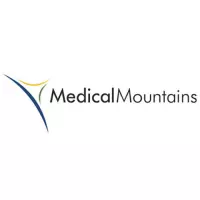Tuttlingen - Instructions for use for medical devices move between minimalism and completeness: The topic was examined in all its facets last week at the symposium organized by MedicalMountains GmbH as part of the Med Alliance BW project. The approximately 80 participants took away a wealth of information – both current and future.
At the beginning, Christoph Kiesselbach (Schrack & Parnter, Reutlingen) made it clear what role the instructions for use play: “Without them, a product is not complete.” However, given the wide range of products, from simple to highly complex, it is difficult to show generally applicable framework conditions and rules. The question is “what suits the product and the user group”. The answer to this cannot be taken from the manufacturers. ISO 20417:2021 was named as an aid to interpretation. Even if not explicitly written for medical devices, IEC/IEEE 82079-1 can also be used.
Nevertheless, it became clear that meeting regulatory requirements, especially the EU MDR, does not necessarily mean having good instructions for use. It should be complete but not overloaded, structured but understandable, contain warnings but not consist exclusively of them. And: It must be maintained throughout its entire life cycle. Jörg Stockhardt (Consulting & more, Berlin) illustrated this with an example: If a competitor brings a better product with lower risk potential onto the market, one has to reassess one's own benefit-risk ratio - which in turn is reflected in the instructions for use could. In order to master the extensive process, Michael Kania (meddevo, Bad Herstfeld) presented suitable software solutions: from classic word processing programs to special layout and database applications. Regardless, he gave the advice to write a “Standard Operating Procedure” for labeling and instructions for use. Be it to be prepared for a possible change in personnel or to be able to provide written evidence of decisions to audit authorities - according to the old audit wisdom: If it is not documented, it does not exist.
The second half of the symposium was more perspective-oriented – it was about the electronic instructions for use, the eIFU. MedicalMountains managing director Julia Steckeler presented the survey results collected together with SPECTARIS. Accordingly, both users and manufacturers, with over 80 percent each, are in favor of expanding the existing legal framework, which limits the use of eIFUs to a few product groups. Franz Menean (Medagent GmbH, Mühlheim) discussed the currently existing regulations and possible application scenarios for eIFUs. Videos are one of the elements that are often integrated. But here too there is light and shadow: without description, moving images do not bring any real added value. With regard to important user-friendliness requirements, the principle of equivalence between electronic and printed instructions applies, reminded Franz Menean.





